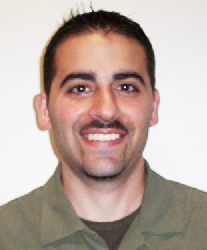- Cisco Community
- Technology and Support
- Collaboration
- TelePresence and Video Infrastructure
- Hi Jaret,Thanks a lot! The
- Subscribe to RSS Feed
- Mark Topic as New
- Mark Topic as Read
- Float this Topic for Current User
- Bookmark
- Subscribe
- Mute
- Printer Friendly Page
Ask the Expert: Cisco TelePresence for the Enterprise
- Mark as New
- Bookmark
- Subscribe
- Mute
- Subscribe to RSS Feed
- Permalink
- Report Inappropriate Content
08-01-2014 02:31 PM - edited 03-18-2019 03:14 AM
 Welcome to the Cisco® Support Community Ask the Expert conversation. This is an opportunity to learn and ask questions about Cisco Telepresence® for the enterprise.
Welcome to the Cisco® Support Community Ask the Expert conversation. This is an opportunity to learn and ask questions about Cisco Telepresence® for the enterprise.
Cisco experts Jaret, Fernando, and Fred will be covering all Cisco TelePresence products. Topics include Cisco TelePresence endpoints and TelePresence infrastructure such as the Cisco TelePresence Video Communication Server (VCS), Cisco Expressway Series, Cisco Unified Communication Manager (CallManager), Cisco TelePresence Servers (MSE 8710, on Virtual Machine, etc.), MCU (MSE 8510, etc.), Cisco TelePresence Management Suite (TMS), and all other Cisco TelePresence related devices.
 Jaret Osborne is an 8-year Cisco Advanced Services veteran. In his Advanced Services tour, Jaret has covered all aspects of Cisco Unified Communications and TelePresence products, including both enterprise and service provider verticals. Most recently Jaret has been working with global service providers supporting their Cisco TelePresence as a Service offerings while also incubating new cloud services at Cisco.
Jaret Osborne is an 8-year Cisco Advanced Services veteran. In his Advanced Services tour, Jaret has covered all aspects of Cisco Unified Communications and TelePresence products, including both enterprise and service provider verticals. Most recently Jaret has been working with global service providers supporting their Cisco TelePresence as a Service offerings while also incubating new cloud services at Cisco.
 Fernando Rivas is a Cisco Advanced Services NCE, starting in the Cisco Technical Assistance Center (TAC), 2007, on the Collaboration Technology Team mastering the Cisco Unified Communication technologies and specialized in call control CUCM,VCS) and conferencing (MeetingPlace, Telepresence). In 2011, he joined Cisco Advanced Services as a member of the Cisco Collaboration team and participated in several Cisco TelePresence and video-related technologies deployments. Currently he is a member of the Video Cloud Technology Team, supporting video exchanges in several and architecting new private video cloud solutions for large enterprises. Fernando holds a routing and switching CCIE® certification (22975).
Fernando Rivas is a Cisco Advanced Services NCE, starting in the Cisco Technical Assistance Center (TAC), 2007, on the Collaboration Technology Team mastering the Cisco Unified Communication technologies and specialized in call control CUCM,VCS) and conferencing (MeetingPlace, Telepresence). In 2011, he joined Cisco Advanced Services as a member of the Cisco Collaboration team and participated in several Cisco TelePresence and video-related technologies deployments. Currently he is a member of the Video Cloud Technology Team, supporting video exchanges in several and architecting new private video cloud solutions for large enterprises. Fernando holds a routing and switching CCIE® certification (22975).
 Fred Mollenkopf is a Cisco Advanced Services Network consulting engineer working at Cisco for the last 7 years. Fred has led some of the largest Cisco Unified Communication and Collaboration deployments done for Cisco customers and partners. Over 15 years’ experience in data networking with a specialization in Cisco Unified Communications in 2004. Currently he is a member of the SP Video Advanced Services Team, supporting SP video exchanges and the Cisco Telepresence solutions. Fred maintains an active CCIE® in Voice (17521).
Fred Mollenkopf is a Cisco Advanced Services Network consulting engineer working at Cisco for the last 7 years. Fred has led some of the largest Cisco Unified Communication and Collaboration deployments done for Cisco customers and partners. Over 15 years’ experience in data networking with a specialization in Cisco Unified Communications in 2004. Currently he is a member of the SP Video Advanced Services Team, supporting SP video exchanges and the Cisco Telepresence solutions. Fred maintains an active CCIE® in Voice (17521).
Remember to use the rating system to let Jaret, Fernando, and Fred know if you have received an adequate response.
Because of the volume expected during this event, Jaret, Fred, and Fernando might not be able to answer every question. Remember that you can continue the conversation in the Collaboration, Voice and Video Community, under the sub-community TelePresence, shortly after the event. This event lasts through August 15, 2014. Visit this forum often to view responses to your questions and the questions of other Cisco Support Community members.
- Labels:
-
Room Endpoints
- Mark as New
- Bookmark
- Subscribe
- Mute
- Subscribe to RSS Feed
- Permalink
- Report Inappropriate Content
08-07-2014 07:21 AM
Hi Patrick, I've included a sample below. Also note that x8 introduced the ability to support regular expressions... Note that each line begins with < and ends with >. For example, the line that starts with "<cpl xmls" wrapped to a total of 3 lines on this forum editor. The actual end of that line is "cpl.xsd">"
Pre x8 CPL sample:
<?xml version="1.0" encoding="UTF-8" ?>
<cpl xmlns="urn:ietf:params:xml:ns:cpl" xmlns:taa="http://www.tandberg.net/cpl-extensions" xmlns:xsi="http://www.w3.org/2001/XMLSchema-instance" xsi:schemaLocation="urn:ietf:params:xml:ns:cpl cpl.xsd">
<taa:routed>
<address-switch field="origin">
<address is="old-source@domain.com">
<taa:location clear="yes" url="new-destination@domain.com" source-url-for-message="new-source@domain.com">
</taa:location>
</address>
</address-switch>
</taa:routed>
</cpl>
Post x8 CPL sample:
<cpl xsi:schemaLocation="urn:ietf:params:xml:ns:cpl cpl.xsd">
<taa:routed>
<taa:rule-switch>
<taa:rule unauthenticated-origin=".*" destination="(.+)@cisco\.com>
<taa:location clear="yes" regex="(?!.*@ciscotp\.com)" replace="\1" source-url-for-message-regex="(.*)@(ciscotp)\.com" source-url-for-message-replace="\1.@\2.net">
<taa:proxy/>
</taa:location>
</taa:rule>
</taa:rule-switch>
</taa:routed>
</cpl>
- Mark as New
- Bookmark
- Subscribe
- Mute
- Subscribe to RSS Feed
- Permalink
- Report Inappropriate Content
08-07-2014 07:56 AM
I'm familiar with the VCS CPL, just doesn't help there were no examples for this particular rule. Took me a few minutes to figure out how I needed to edit your example, but it works just like I wanted.
Thanks!
- Mark as New
- Bookmark
- Subscribe
- Mute
- Subscribe to RSS Feed
- Permalink
- Report Inappropriate Content
04-04-2018 11:50 AM - edited 04-04-2018 01:25 PM
I know this forum is old, but I am attempting to use your script to rewrite source SIP URIs. However it is not working for me. i am concerned the issue I am having is that the source URI is an IP Address instead of a domain name. Someone mentioned previously that the source must be a domain for it to parse correctly. Is this correct? below is a snip of my config....
<taa:rule unauthenticated-origin=".*" destination=".*">
<taa:location clear="yes" regex="(.*)" replace="\1" source-url-for-message-regex="(.*)@172.26.4.4" source-url-for-message-replace="\1@test.com">
<taa:proxy/>
</taa:location>
</taa:rule>
- Mark as New
- Bookmark
- Subscribe
- Mute
- Subscribe to RSS Feed
- Permalink
- Report Inappropriate Content
04-04-2018 12:47 PM
Is the source authenticated or unauthenticated (check VCS search history)?
- Mark as New
- Bookmark
- Subscribe
- Mute
- Subscribe to RSS Feed
- Permalink
- Report Inappropriate Content
04-04-2018 01:00 PM
Outbound, and no.
-
- Authenticated: False
Just to test, I set the devices SIP URI manually to use a domain name and it still doesnt manipulate the URI. Now my config looks like.....
<taa:rule unauthenticated-origin=".*" destination=".*">
<taa:location clear="yes" regex="(.*)" replace="\1" source-url-for-message-regex="(.*)@test.int" source-url-for-message-replace="\1@test.com">
<taa:proxy/>
</taa:location>
</taa:rule>
I am running VCS 8.7
- Mark as New
- Bookmark
- Subscribe
- Mute
- Subscribe to RSS Feed
- Permalink
- Report Inappropriate Content
04-04-2018 01:23 PM
- Mark as New
- Bookmark
- Subscribe
- Mute
- Subscribe to RSS Feed
- Permalink
- Report Inappropriate Content
08-08-2014 04:56 AM
Hey guys!
I have a few queries about Video calling.
1.Does a one to one video call use a conference bridge?
2. Is it possible to have a video call between 2 standalone SX-20s that use NAT to translate to dedicated public IP addresses without a bridge? I had come across an implementation where they had NAT the SX-20 IP to a public IP and by dialing the IP address of the Blue Jeans website, they could initiate a call using the Blue Jeans bridge.
Thanks in advance.
Regards,
Gunjan Jain
- Mark as New
- Bookmark
- Subscribe
- Mute
- Subscribe to RSS Feed
- Permalink
- Report Inappropriate Content
08-08-2014 06:23 AM
Hi Gunjan -
1. Not required. If the endpoints can reach each other via IP, and they speak compatible protocols the endpoints can call each other directly. This of course requires your call control platform (CUCM or VCS, or whatever you are using) to be properly configured to allow the endpoints to call each other directly.
2.Yes, this is possible. However, it will require the use of ICE. ICE is a part of a protocol set that allows communications in these types of topology using STUN and/or TURN. There are several "gotchas" to making this work - namely all devices in the path (endpoint, call control, firewalls) must support STUN and/or TURN. With TURN there is a deicated device that the endpoints will send their media to and then that device will combine the streams.
Hope that helps.
-Jaret
- Mark as New
- Bookmark
- Subscribe
- Mute
- Subscribe to RSS Feed
- Permalink
- Report Inappropriate Content
08-14-2014 03:02 AM
Hi Jaret,
Thanks a lot! The information you provided was extremely helpful.
Regards,
Gunjan
- Mark as New
- Bookmark
- Subscribe
- Mute
- Subscribe to RSS Feed
- Permalink
- Report Inappropriate Content
08-14-2014 03:21 AM
Hi,
TX9000 call to Telepresence Server have TIP issue (not attempting TIP/MUX negotiation (insufficient tokens specified))
Network Diagram
TX9000 --registered--> CUCM10 --sip trunk--> Telepresence Conductor ----> Telepresence Server VM
CUCM: 192.168.1.11
Telepresence Conductor: 192.168.1.17
TX9000 can call to conference number which match Conference aliases on Telepresence Conductor. But TX9000 video call active only 1 screen. Telepresence Server show log
282 17:09:48.943 APP Info conference "2011" created
283 17:09:49.072 SIP Info Incoming call from 192.168.1.17:53110
284 17:09:49.073 APP Info call 24: new incoming SIP call from "1001@192.168.1.11"
285 17:09:49.155 APP Info call 24: "1001" now joined conference "2011"
286 17:09:49.172 TIP Warning call 24: not attempting TIP/MUX negotiation (insufficient tokens specified)
287 17:09:49.172 SIP Warning call 24: local failure - attempting to process capabilities while extended video channel is opening
What is tokens in Telepresence Server?
Please suggest me for resolve this issue. Thank you
- Mark as New
- Bookmark
- Subscribe
- Mute
- Subscribe to RSS Feed
- Permalink
- Report Inappropriate Content
08-14-2014 03:37 AM
Hello Jan
Can you share the version of Conductor you are using?
One thing you can quickly check is the following:
- The Conference Alias you are accessing must be associated with a Conference Template.
Can you verify if that Conference Template has the setting "Allow multiscreen" set to Yes?
If not set it to Yes.
- Tokens is what the TPS use to allocate port and licenses (or portion of licenses) for each participant of the call. The more tokens you request, the more licenses you consume when accessing the TPS.
Regards
Fernando
- Mark as New
- Bookmark
- Subscribe
- Mute
- Subscribe to RSS Feed
- Permalink
- Report Inappropriate Content
08-14-2014 03:46 AM
Hi Fernando,
Conductor version is 2.3
Allow mutiscreen is Yes.
TPS have 8 Screen license
I just call from one TX9000 to Conference Alias Name. I think TX9000 consume 4 screen license that sufficient.
Are TPS need more license? or TX9000 need some certificate?
- Mark as New
- Bookmark
- Subscribe
- Mute
- Subscribe to RSS Feed
- Permalink
- Report Inappropriate Content
08-14-2014 08:44 AM
Hello -
Can you verify that your CUCM Region configuraion is configured properly to allow all three screens?
Also, double check your SIP Profile that is assigned to the SIP Trunk.
-Jaret
- Mark as New
- Bookmark
- Subscribe
- Mute
- Subscribe to RSS Feed
- Permalink
- Report Inappropriate Content
08-15-2014 01:40 AM
็Hi Fernando and Jaret,
Thank you all for support
Now it's worked. Participant quality in Conference templates must be Full HD.(default is HD)
- « Previous
- Next »
Discover and save your favorite ideas. Come back to expert answers, step-by-step guides, recent topics, and more.
New here? Get started with these tips. How to use Community New member guide

